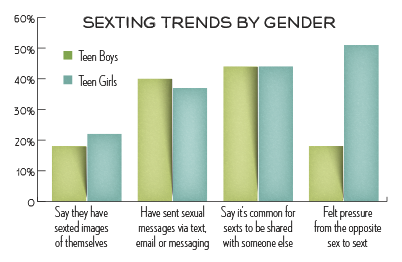Sexting is the practice of using computers, smart phones, and other electronic devices to send or receive sexually graphic texts, photos, or videos over the internet. It’s a growing phenomenon among preteens, teens, and young adults. As a matter of fact, several studies suggest that somewhere around 20 percent of adolescents have shared nude or seminude pictures of themselves by way of a mobile phone or computer.
New technological developments are making this kind of activity easier and more enticing all the time. Snapchat has actually been nicknamed the sexting app because users can easily transmit photos and text messages that disappear in seconds. This encourages teens to think that it’s relatively safe to send risqué or pornographic pictures of themselves.

This is a serious mistake. Online privacy is a myth—digital images are forever, no matter what the creators and purveyors of Snapchat may say. There are actually a number of ways in which these images can be captured, stored, and shared by people for whom they were never intended. And once they’re out there, there’s no telling where they might end up.
Law enforcement officials report that sext messages have become a veritable gold mine for sexual predators in search of likely victims. In fact, statistics indicate that as many as 20 to 25 percent of them eventually wind up on websites run by pedophiles.
Quick Facts About Sexting[1]
- 11 percent of teens admit they’ve sent nude photos to strangers.
- 80 percent of teens who have sexted are under the age of eighteen.
- More than half (57 percent) of teens from a 2012 survey reported that they had been asked to send a sext.
- 12 percent of teen girls feel pressured to sext.
- 38 percent of teen girls and 39 percent of teen boys say they’ve received sexually suggestive text messages or emails that were originally meant for someone else.
- Tim Woda, “Sexting Facts and Statistics: Why Parents Should Be Concerned,” UKnowKids Digital Parenting Blog, September 19, 2014, http://resources.uknowkids.com/blog/sexting-facts-and-statistics-why-parents-should-be-concerned (accessed August 15, 2018)